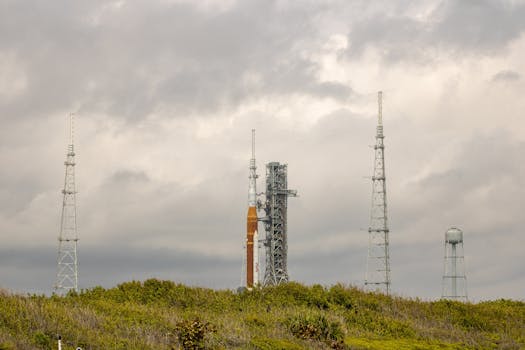
From Ground to Sky: The Evolution of Satellite Telecommunications Technology Satellite Telecommunications has undergone significant transformations since the launch of the first artificial satellite, Sputnik, in 1957. The evolution of satellite telecommunications technology has revolutionized the way we communicate, from the first satellite launch to modern-day satellite constellations. This article will delve into the history and development of satellite telecommunications, highlighting key milestones, technological advancements, and the current state of the industry.
The first commercial communications satellite, Intelsat 1, was launched in 1965, marking the beginning of a new era in telecommunications. This satellite enabled transatlantic communications, facilitating international telephone calls, television broadcasts, and data transmission. The success of Intelsat 1 paved the way for the development of more advanced satellites, including geostationary satellites, which remain in a fixed position relative to the Earth’s surface. Geostationary satellites have been instrumental in providing global coverage, enabling communications between different regions and countries.
The 1980s saw the introduction of mobile satellite communications, with the launch of the first mobile satellite system, Inmarsat. This system provided global coverage, enabling communications between ships, aircraft, and remote areas. The development of mobile satellite communications has been crucial in supporting emergency services, search and rescue operations, and providing connectivity in areas where traditional telecommunications infrastructure is lacking.
The advent of digital technology in the 1990s revolutionized the satellite telecommunications industry. Digital satellites offered higher bandwidth, improved signal quality, and increased capacity, enabling the transmission of large amounts of data, including video and internet traffic. The introduction of digital video broadcasting (DVB) standards enabled the transmission of high-quality television signals, while the development of satellite-based internet protocols (e.g., IP over satellite) facilitated the growth of satellite-based broadband services.
In recent years, the satellite telecommunications industry has experienced significant growth, driven by advancements in technology, decreasing costs, and increasing demand for global connectivity. The launch of satellite constellations, such as Iridium and Globalstar, has provided global coverage, enabling communications in remote and underserved areas. The development of high-throughput satellites (HTS) has increased bandwidth, enabling the provision of high-speed broadband services, including internet access, video streaming, and cloud computing.
The use of satellite telecommunications technology has numerous benefits, including global coverage, reliability, and flexibility. Satellites can provide connectivity in areas where traditional telecommunications infrastructure is lacking, making them ideal for emergency services, remote communities, and developing countries. Satellite telecommunications also offer a high degree of reliability, as they are less susceptible to outages and damage from natural disasters.
However, satellite telecommunications also face challenges, including latency, interference, and regulatory issues. Latency, or delay, can be a significant issue, as signals must travel from the Earth’s surface to the satellite and back, resulting in delays of up to 600 milliseconds. Interference from other satellites, terrestrial systems, and natural sources can also impact signal quality. Regulatory issues, including licensing, spectrum allocation, and international cooperation, can also pose challenges for satellite telecommunications operators.
Despite these challenges, the future of satellite telecommunications looks promising. The development of new technologies, such as phased arrays, beamforming, and advanced propulsion systems, is expected to improve the performance and efficiency of satellites. The growth of the Internet of Things (IoT) and the increasing demand for global connectivity are also expected to drive the demand for satellite telecommunications services.
In conclusion, the evolution of satellite telecommunications technology has transformed the way we communicate, from the first satellite launch to modern-day satellite constellations. The industry has experienced significant growth, driven by advancements in technology, decreasing costs, and increasing demand for global connectivity. While challenges remain, the benefits of satellite telecommunications, including global coverage, reliability, and flexibility, make them an essential component of modern telecommunications infrastructure.




